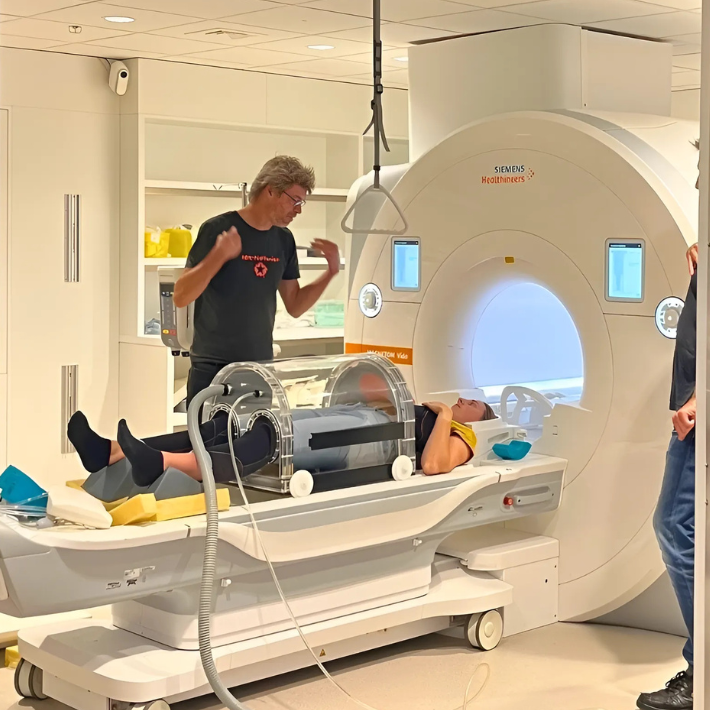Self-developed MRI box simulates effect of sudden blood pressure dip on brain
The box seals the area of the upper legs, from knees to waist, and mimics the effects of standing up quickly by reducing the air pressure within the box.
&width=710&height=710)
The box was developed specifically for frail elderly patients, in whom fluctuations in cerebral blood flow can cause brain damage and cognitive problems such as dementia.
The idea for this box came from radiology researcher Thijs van Osch. He was looking for a new way to use an MRI scanner to study the effects of standing up quickly (where blood pressure drops). That way, he expected to be able to better see which physiological processes in the brain are or are not active in such a situation. The only problem was that individuals in an MRI scanner must naturally lie down. Van Osch therefore asked Wolf Botterman and Michael Boonekamp of the Department of Design & Prototyping (Medical Technology) to make a box that could simulate the effects of standing up in an MRI scanner. From that came a design that fits inside an MRI scanner and can be placed over a test subject's legs.
Materials suitable for magnetic environment
The box seals the area of the upper legs, from knees to waist, and mimics the effects of standing up quickly by reducing the air pressure within the box. This causes the blood to temporarily “sink” downward, challenging the brain. The feeling that test subjects will experience when the box is on will, according to the designers, be similar to the feeling that occurs when standing up quickly from a sitting position: a light feeling in the head. There is very little chance that the test subject will faint in the MRI scanner.
In a previous version, where the entire legs were in the box, the participant was sucked down several inches, which hindered imaging. To reduce this effect, the box was made smaller and put on wheels so that it can move slightly when the air pressure is lowered, keeping the head in the same place. The box was designed with materials suitable for use in a magnetic environment, such as synthetic screws and plexiglass components. The air pressure is controlled automatically. To do this, the team worked with instrument maker Bram de Visser to develop an electric motor and process regulator with a tube connected to the box. Test subjects wear special leg and waist pieces, made of wetsuit material, that help create an airtight seal. The box is translucent to reduce claustrophobic feelings; a common problem with MRI scans because patients can experience a closed-off feeling inside the device.
Research and safety
Currently, the box is ready for research with healthy subjects. A medical ethics committee will first test the design for safety and effectiveness. After positive evaluation, the box will be used with elderly test subjects. Then Van Osch can study how their brains respond to the changes in blood pressure and what this means for their overall fitness and health.
Impact
The box developed at LUMC is a great example of how technical innovation can be linked to clinical research. An innovation that advances research on brain function in elderly patients and contributes to the care of frail elderly in general.